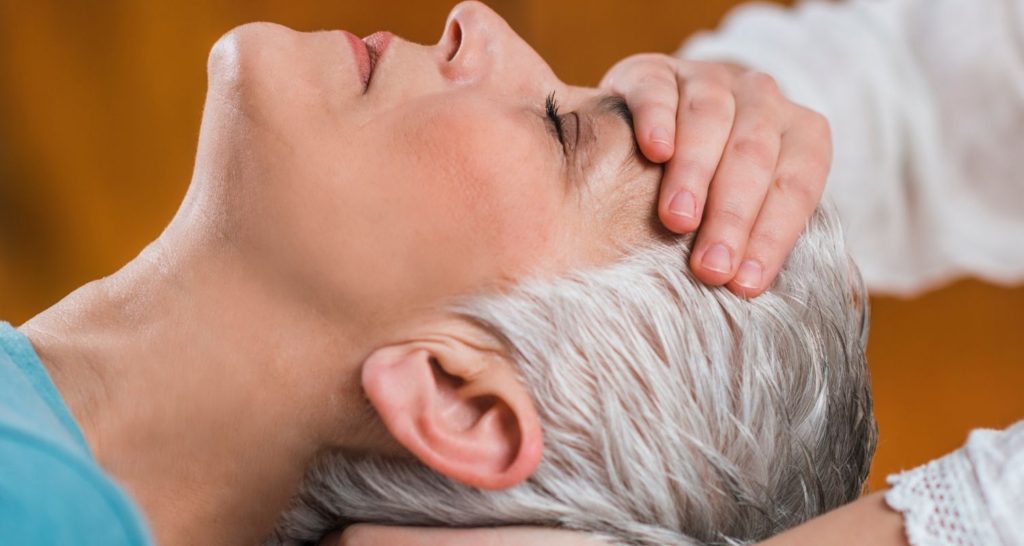Table of Contents
What Is Craniosacral Therapy (CST) and How Does It Work?
For loosening constraints in the craniosacral system and increasing the operation of your central nervous system, CST utilizes a light touch of under five grams (about the weight of a nickel). This gentle touch method can help to improve the circulation and pressure of the fluid around your spinal cord and brain, alleviating pain and dysfunction. CST can be used as a standalone treatment or in conjunction with other medical or complementary therapies.
The spinal cord and brain, which make up your central nervous system, have a huge impact on your body’s capacity to work effectively. The craniosacral system also has a major impact on the central nervous system (as well as the fluids and membranes which surround it), protecting and feeding your spinal cord and brain.
Every day, your body is faced with demands and challenges for which it must adjust. However, such modifications frequently result in a tightening of bodily tissues, which distorts the craniosacral system. Tension may accumulate around your spinal cord and brain due to these deformities, resulting in limitations. These might impair the proper functioning of your central nervous system, in addition to all of the systems with which it interacts.
Craniosacral treatment improves your body’s ability to self-correct by normalizing the environment around your spinal cord and brain. It helps you with problems like:
- Sports-related injuries
- Pain that lasts a long time
- Addiction
- Impairment of the nervous system
- Stroke
During therapy, you may feel a variety of experiences including:
- Seeing colours or reliving memories after falling asleep
- Feeling deep relaxation
- Having the feeling of pins and needles
- Precisely detecting pulsations
- Having a chilly or hot sensation
What Is Craniosacral Therapy Used For?
CST proponents say it releases compression in the neck, head, and back, assisting in the release of physical and mental tension and stress, as well as pain relief. It can also help relax the neck, nerve, and head constraints thereby restoring cranial movement.
mental tension and stress, as well as pain relief. It can also help relax the neck, nerve, and head constraints thereby restoring cranial movement.
Craniosacral treatment is beneficial to people of all ages. Here are just some of the many applications for which it is used:
- Migraines
According to research, craniosacral therapy may be an effective migraine treatment. After four weeks of CST therapy, one research study found that self-reported migraine symptoms were decreased. Another study found that CST reduces the requirement for pain medication by 70% in patients. The patients were treated in various settings by 10 different independent practitioners over differing lengths of time.
Another way to relieve head discomfort is to give yourself a scalp massage, which can be quite calming. You may be unaware that you have muscles on your scalp, nor are you conscious of the stress they retain. These muscles help you form facial emotions and they might be under a lot of constant pressure, especially if you spend all day gazing at a computer, or if you’re under a lot of stress. The stiffness should start to dissipate after your head is rubbed.
- Backache
Based on the results of a research study that revealed CST reactions were superior to a traditional massage response, there’s indication CST might help with back discomfort.
- Post-Concussive Syndrome
CST treatment may be an alternative for pain management and sleeping problems caused by concussions.
- Autism
According to research, in children with autism CST therapy increases emotional stability, mood and communication. These results were based on both therapist and parent reports.
- Addiction
When you’re attempting to alter your habits and lifestyle drastically, you’re more likely to feel exhausted, stressed and run down, which is when bodywork approaches can be of assistance. After a session, those who have been feeling down about their addiction may find that they feel better.
- Anxiety
There’s evidence that cognitive-behavioural therapy (CBT) for fibromyalgia can help reduce anxiety and hence improve quality of life. You may feel tranquil or anchored after a craniosacral therapy session.
- Asthma
CST and acupuncture both offered potential advantages when used in conjunction with normal asthma therapy in a trial of individuals with asthma.
- Multiple Sclerosis
According to 2009 research, CST may help people with multiple sclerosis, decreasing urinary tract symptoms and improving their quality of life.
More information on craniosacral therapy (CST) can be found at fraserlifephysio.ca or by calling our office in Langley at (778) 278-4755.
< Previous | Home | Next >



Recent Comments